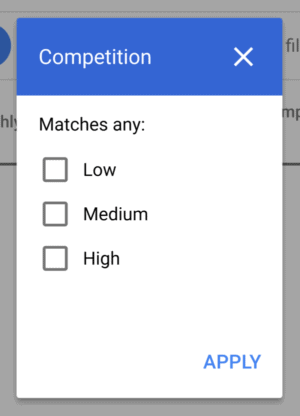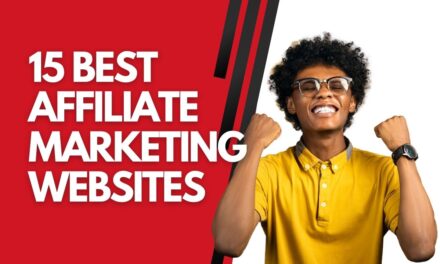This guide is all about finding keywords that show people want to buy things.
If you’re looking for words that show someone is ready to buy, you’ll find some really useful tips in this post.
Let’s get started!
What is Commercial Intent?
Commercial intent is figuring out how likely it is that someone searching for a word will become interested in buying something. You can check this by seeing how many people are putting ads on a certain word in Google AdWords.
Why Commercial Intent Matters in Keyword Research
If you asked me the most common mistake in keyword research, I’d say it’s not giving enough attention to commercial intent.
Many SEO experts agree that, when choosing keywords, commercial intent is even more crucial than search volume.
Let me share a quick story to drive this home…
One of the first websites I ever created got over 60,000 unique visitors monthly from search engines. Now, how much money did it make? Would you guess $10,000? $25,000? $40,000?
Would you believe it was just $400?
Why did it fail? When I picked keywords for that site, I focused on how often people searched for them, not on whether they were likely to buy something. Nearly all my traffic came from informational searches. As you’ll learn, visitors from informational searches are hard to turn into paying customers.
But here’s the good news…
With the right approach, you can easily find keywords that people ready to buy use.
Once your site reaches those people, turning them into customers becomes a breeze.
Without delay, let me guide you on finding powerful keywords for your business.
Commercial Intent: The Four Types of Keywords
When we talk about commercial intent, all the millions of keywords out there can be grouped into four categories:
- Buy Now Keywords
These are the words people use just minutes before buying something. People looking for Buy Now Keywords might literally have their credit card ready. Examples include words like Buy, Coupon, Discount, Deal, Shipping. Real-life examples are searches like “Bluehost discount,” “Buy candles online,” and “Custom t-shirts free shipping.” While they might not have high search volume, these keywords convert really well because people using them are ready to make a purchase.
- Product Keywords
Product Keywords are searches focusing on a specific product category, brand, or service. People using these keywords are in the earlier stages of deciding what to buy. Examples include Review, Best, Top 10, specific brand names (like “Nike” or “Toshiba”), specific products (like “Macbook Pro” or “Samsung Galaxy”), product categories (like “WordPress hosting” or “tennis shoes”), and words like Cheap and Affordable. Keywords with “cheap” can actually convert well because the searcher has already decided on the product type and is just looking for affordability.
- Informational Keywords
Most keywords fall into the Informational category. These are searches where people are looking for information and might not be ready to buy immediately. Examples include How to, Best way to, Ways to, I need to, Tips, and Strategies. While they may not convert right away, it’s crucial not to ignore them. To make the most of Informational Keywords, find ones with high search volume and low competition, create content around them, and try to capture those visitors on an email list so that your business is top of mind when they’re ready to buy.
- Tire Kicker Keywords
Tire Kicker Keywords are searches very unlikely to convert, either now or in the near future. Examples include Free, Torrent, Download, …for free. For instance, a search like “watch The Simpsons online free” is a classic Tire Kicker Keyword. It’s unlikely that someone making this search will buy anything or even click on an ad. On the flip side, keywords like “Buy Simpsons TV episodes” (a Buy Now Keyword), “Simpsons DVDs” (a Product Keyword), or “How to watch Simpsons Episodes” (an Informational Keyword) have a higher chance of conversion.
How to Get Reliable Information on Commercial Intent
Alright, let’s get straight to it:
The Four Keyword Classes usually give a good idea of what people intend to buy.
Usually.
Because there’s nothing worse than being the top result for a keyword, only to realize you’re making just a penny or two from each visitor.
Here are two quick methods to get objective info on how valuable the traffic from a keyword really is.
- Adwords Top of Page Bid
Adwords Top of Page Bid used to be called “Average CPC” (CPC=Cost Per Click). They changed the name but kept the dollar amounts the same. I think Top of Page Bid is just the average CPC with a new name.
Regardless, it’s one of the few ways to see real-world data about commercial intent. If an Adwords advertiser is shelling out $15 per click, you can be sure that traffic is valuable. If you rank for that keyword in organic search, converting that traffic into email signups, affiliate commissions, and paying customers should be a breeze.
Here’s how:
First, log in to your Google Adwords account and go to the Keyword Planner:

Click on “Find New Keywords
:


Check the bids for that keyword, as well as other keywords suggested by the Google Keyword Planner.

Just look at the HUGE difference between the keywords in the list above.
The keyword “WordPress hosting” is a Product Keyword that has a top of page bid of $10.34.

On the flip side, “layout WordPress” is an Informational Keyword. Since someone looking for WordPress layouts is in the early stages of deciding what to buy, advertisers pay five times less compared to someone searching for “WordPress hosting.”
While the Four Keyword Classes offer useful guidelines, nothing beats checking what the market is willing to pay for clicks. In my experience, the Top of Page Bid is the most accurate indicator of commercial intent.
- Adwords Competition
Adwords Competition is a useful addition to the Suggested Bid. Competition refers to the number of advertisers bidding on a specific keyword in Adwords.
As you’d guess, the more advertisers competing for a keyword, the more valuable that keyword tends to be.
a

There are only three levels of competition (Low, Medium, and High), so the metric isn’t very precise.
But it’s still another real-world data point to consider when gauging commercial intent.
You can also check Adwords competition by searching for your keyword on Google and noting how many Adwords ads appear on the page.

If you see a lot of ads on the first page, then you know that it’s a highly sought-after keyword. In other words, it’s a keyword you probably want to target.
Conclusion
Commercial intent is a crucial but often overlooked aspect of keyword research.
From what I’ve seen, websites that get the best return on investment (ROI) from SEO usually concentrate almost entirely on keywords indicating a strong intent to buy.
I hope this guide has helped you understand how to prioritize these keywords.
Now, I’d like to hear from you.
Which tip from today’s post are you planning to use first?
Are you considering checking ads in organic results, or perhaps you’re interested in focusing on the Top of Page Bid?
Either way, share your thoughts by leaving a comment below right now.





